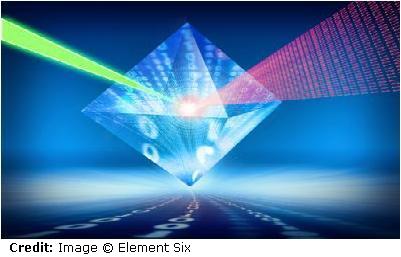Luxembourg-headquartered synthetic diamond supermaterials manufacturer, Element Six has employed its chemical vapor deposition (CVD) grown single crystal synthetic diamond to facilitate a quantum bit to exhibit memory coherence greater than one second at room temperature.

The quantum electron spin can be likened to the two states of a bar magnet with 1 denoting “up” and 0 denoting “down”. In quantum mechanics, the quantum bit (qubit) can represent both 1 and 0 simultaneously. This property forms the basis of quantum computing and can be extended to other magnetic sensing applications. The quantum information processing using synthetic diamond consists of controlling the atomic sized impurities.
Element Six has created synthesis processes, which are characterized by impurity control in the range of parts per trillion. The nano-engineering controlled CVD growth of synthetic diamonds is the result of collaborative research between Harvard University, Max-Planck Institute for Quantum Optics and California Institute of Technology. The study, which is termed as the quantum information research collaboration, focused on developing a synthetic diamond with only one specific impurity or defect called the Nitrogen Vacancy centre. The N-V centre can be spin polarized at room temperature using a green light source and its state can be read out using existing techniques before quantum de-coherence takes place.
While the finding paves the path for future advancement in quantum communications, they have near term applications in quantum sensor technologies at the nanoscale for chemical and biological imaging processes.

No comments:
Post a Comment
Note: Only a member of this blog may post a comment.